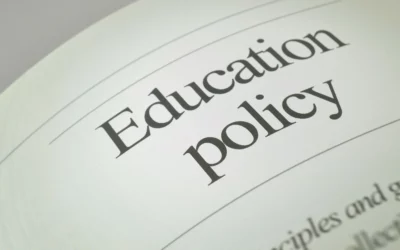
Written by William C. Duncan
March 6, 2020
During the campaign for Prohibition, an aphorism emerged that has become commonplace: “Your right to swing your arm leaves off where my right not to have my nose struck begins.” A less colorful way of putting it is that one’s freedom ends where another’s begins.
Of course, that’s a commonsense observation in many contexts – some sibling interactions, for instance. So, it’s not surprising that in policy discussions, this is a go-to argument for imposing limits, whether on the consumption of alcohol or the exercise of constitutional rights.
In the latter case, it has arisen in the discussion over the contraception mandate. The argument is that religious employers’ right not to provide contraceptives (when doing so would violate their religious beliefs) is an unfair imposition on the right of employees to have contraception paid for. It has been referred to as the “third-party harm” argument – religious exemptions must stop when they impose a cost on someone else.
There is even a Supreme Court decision, Estate of Thornton v. Caldor (1984), that has been invoked to support that claim. In that case, the court invalidated a state law that gave employees an absolute right to take their Sabbath off regardless of the employers’ interest. This, the court said, was too close to government compulsion in favor of religion.
Clichés become commonplace because they appeal to our intuitive sense of things, but they are often simplistic, and this one is no exception. The superficial appeal comes from its similarity to a valid legal principle – that rights are typically not absolute. The Supreme Court announced a right to marry, but it does not apply to children. There can be restrictions even on free speech (making threats, for instance).
So, even a fundamental right may be subject to regulation if the government has a compelling interest in the regulation, like protecting innocent people from being killed. Even then, the government must carefully limit the scope of its regulation so that it advances that overwhelming interest without unnecessarily limiting valid exercises of the fundamental right. This principle is reflected in the Religious Freedom Restoration Act (RFRA).
That principle is reasonable and workable, but the third-party harm argument is not. It is a simplistic caricature.
On March 5, a coalition of religious groups (U.S. Conference of Catholic Bishops, The Church of Jesus Christ of Latter-day Saints, Ethics & Religious Liberty Commission of the Southern Baptist Convention, Lutheran Church-Missouri Synod, Samaritan’s Purse) filed a friend-of-the-court brief with the U.S. Supreme Court in Little Sisters of the Poor Saints Peter and Paul Home v. Pennsylvania. It effectively explains why the third-party argument cannot be used to limit legal protections of religious exercise.
For instance, while the government’s ability to give favoritism to religious practices can be limited, it is free to exempt religious groups from legal regulations to prevent unduly interfering with the religious practices of that organization. This is precisely what the Supreme Court affirmed in Corporation of the Presiding Bishop v. Amos (1987), when it unanimously said Congress was free to allow religious employers to set religious standards for their employees.
The court has also recognized that if the government could circumvent the rights of religious groups – when it could easily avoid doing so – just by claiming that a regulation benefits a third party, protection of religious exercise would disappear: “The Government could turn all regulations into entitlements to which nobody could object on religious grounds, rendering RFRA meaningless.”
Respecting religious liberty can have impacts – similar to those arising from freedom of speech, protections for those accused of crimes, and other rights. A mosque in a community might affect property values; faith-based charitable services might include religious messages some find unwelcome; a religious school might ask its employees to abide by religious commitments. The alternative to allowing these kinds of impacts is that the government restricts the ability of people of faith and their communities to live in accordance with their beliefs and disrupts their ability to do the beneficial work they do, motivated by their sense of accountability to God.
Non-religious organizations benefit from the freedom to share their own messages, or gather in their spaces, or unite around shared beliefs as well. A robust pluralism rooted in First Amendment protections of speech and association ensures these choices even when they incidentally impact others. There is no reason to deny the same respect to First Amendment and Congressional protections of religious freedom.
More Insights
Read More
Looking at Supreme Court and religious freedom through the lens of the presidential campaign
Two constitutional issues highlight similarities and differences between the Biden and Trump administrations.
Education policy to consider during the 2024 election season
Here’s a look at what each presidential candidate is likely to focus on in education, given their track records and campaign platforms.
Ignoring the text of the Constitution is a mistake
A written Constitution is entirely superfluous if the document is simply meant to give the people what they want.


